Check out these pictures showing how an airliner that crashed and sank to the ocean floor was recovered
Taylor Rains

Forward fuselage on Bold HorizonNTSB
- The National Transportation Safety Board recovered a sunken Transair Boeing 737 from the ocean floor.
- The cargo plane broke into two pieces when it crash-landed off the coast of Hawaii, though both pilots survived.
Recovering an aircraft is a big job for the National Transportation Safety Board, which is the federal agency tasked with investigating civil transportation accidents and recovering crashed or damaged vehicles.
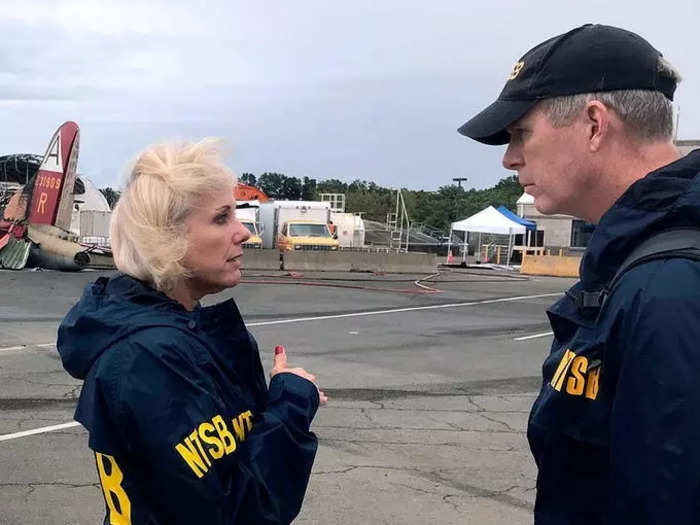
NTSB at Connecticut crash site
NTSB/AP
Source: NTSB
In late October, the NTSB finished the daunting task of lifting a submerged Boeing 737 aircraft from the ocean floor off the coast of Hawaii. The plane, which was operated by air cargo company Transair, sunk on July 2 after the pilots reported anomalies in both engines after takeoff from Honolulu and ditched the plane in the ocean.
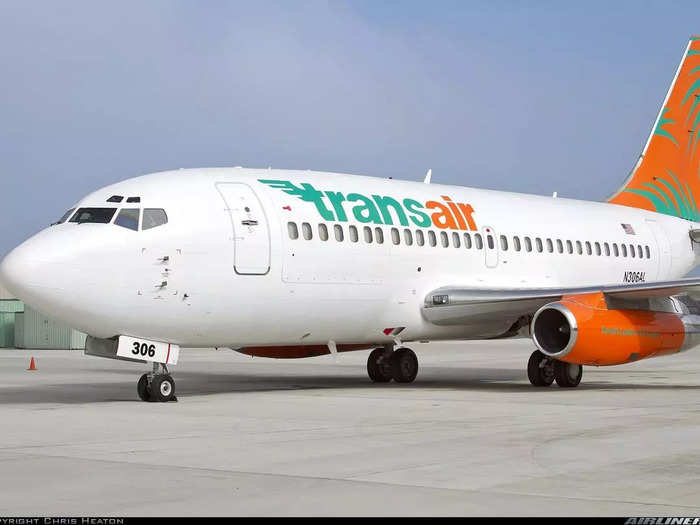
Transair aircraft
Chris Heston/Airliners.net
Source: NTSB
Both pilots, who were the aircraft's sole occupants, survived after escaping through the jet's cockpit windows. The plane came to a rest on an ocean shelf at a depth of 350-450 feet, according to the NTSB.
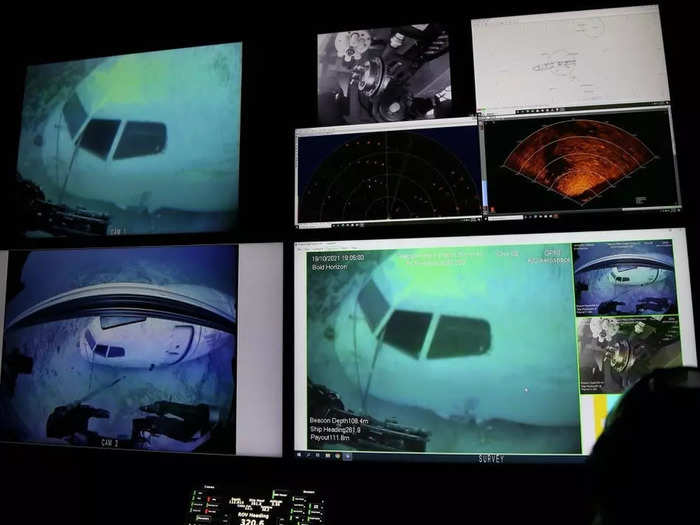
Images of aircraft on display screens the remotely operated vehicle specialists used to survey and rig the wreckage
NTSB
Source: NTSB
NTSB investigators prepped for the recovery for over three months, having conducted interviews, evaluated air traffic control data, and located the wreckage. The underwater survey of the crash showed the plane broke into two main pieces: the forward section with the cockpit...
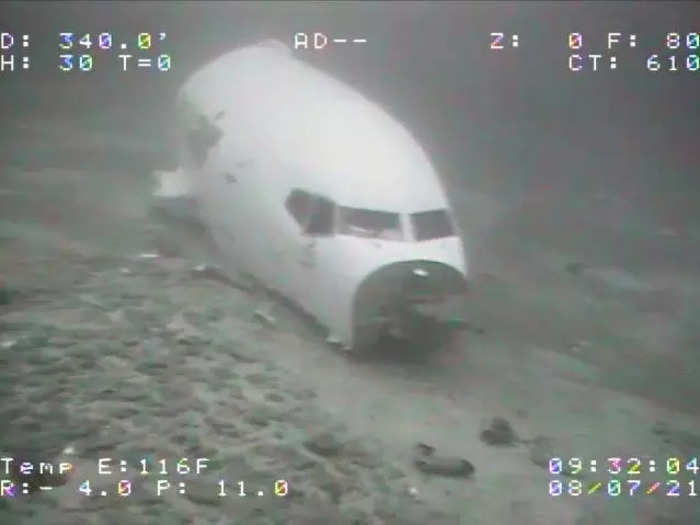
Sea Engineering Inc. via NTSB
Source: NTSB
And the aft section with the tail and wings attached. Four of the six cargo containers were still inside the aft section, with the two other containers having separated but still near the wreckage.
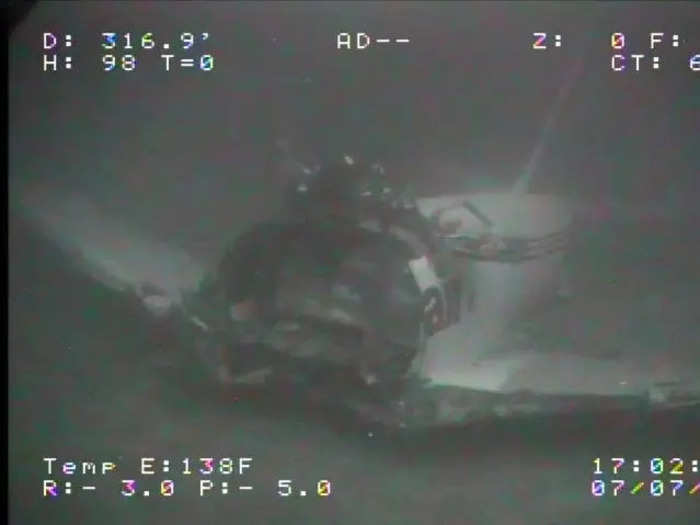
Sea Engineering Inc. via NTSB
Source: NTSB
Both engines and the forward landing gear also detached from the sunken plane and a pallet of cargo was found nearby.
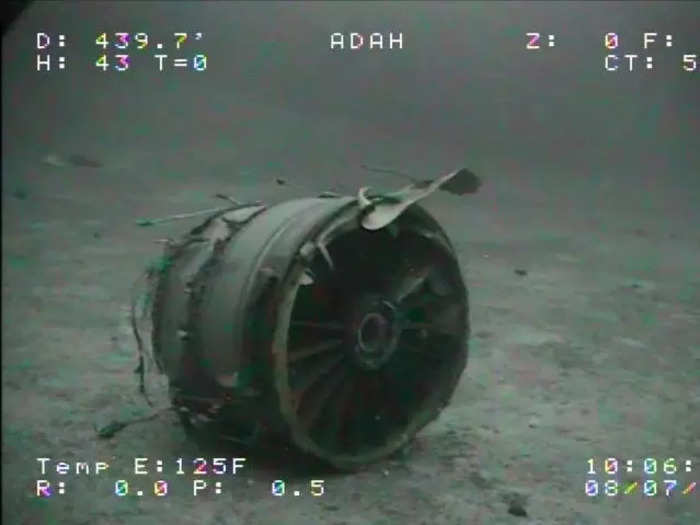
Sea Engineering Inc. via NTSB
Source: NTSB
The recovery is unique because when the plane crash-landed on the water, it broke into two large sections instead of fragmented pieces, NTSB senior safety investigator Lorena Ward said at a briefing in Hawaii.
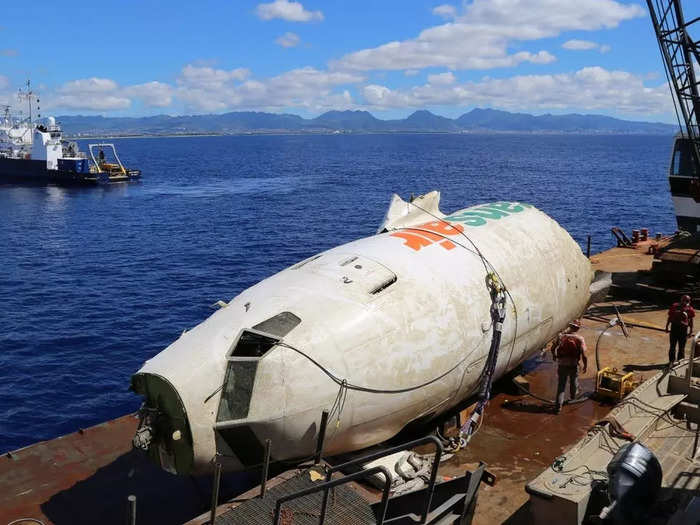
Forward fuselage
NTSB
Source: NTSB
The recovery operation required special underwater retrieval equipment and a coordinated effort between several organizations, including state and federal agencies and entities contracted by Transair's insurance company. Three NTSB investigators were on scene, with two working 12-hour shifts on the vessel.

Remotely operated vehicle (ROV) on the Bold Horizon
NTSB
Source: NTSB
The contracted organizations included the Eclipse Group, which provided its Bold Horizon research vessel equipped with remotely operated vehicles and other underway equipment...
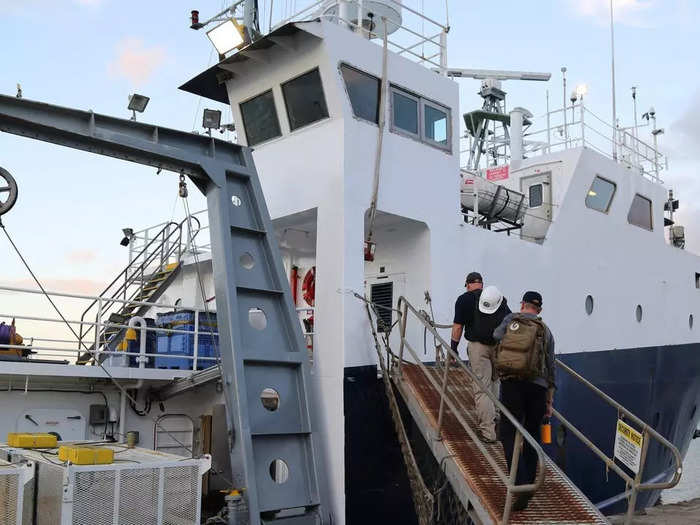
NTSB investigators boarding the Bold Horizon
NTSB
Source: NTSB
And Curtin Maritime Corporation's Salta Verde barge, pulled by the company's Shirley C tug. Both vessels sailed from California to the wreckage, arriving in mid-October, and were used to rig the plane, bring it to the surface, and eventually to shore in Hawaii.
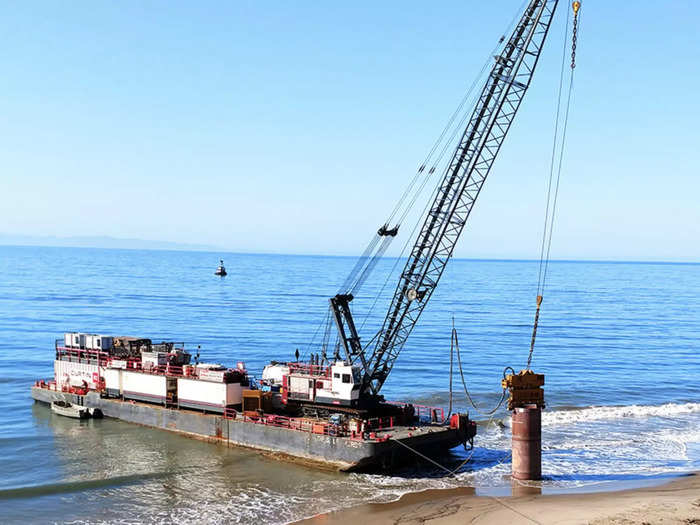
Salta Verde barge
Curtin Maritime Corporation
Source: NTSB
For the operation, Transair's insurance company also contracted the Pacific Environmental Corporation for marine clean-up if needed and the NTSB worked with state and federal agencies to minimize the environmental impacts caused by the recovery.
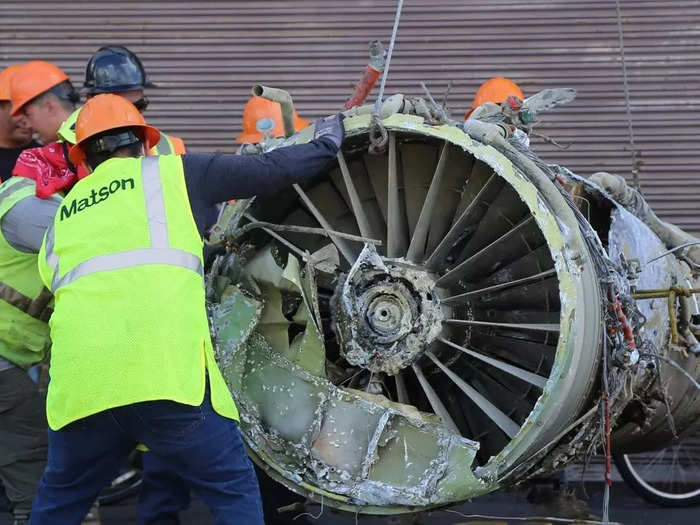
Left engine recovery
NTSB
Source: NTSB
According to the NTSB, a protected species observer was on the vessel to monitor any encounters with endangered species, like Hawaiian monk seals and sea turtles, though none were encountered.
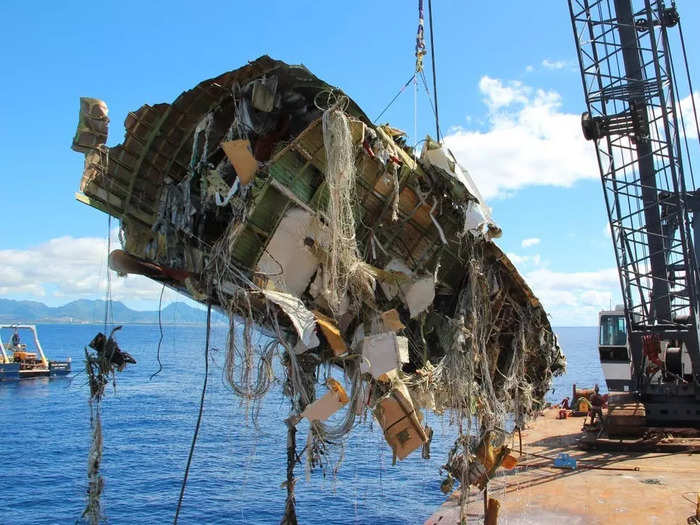
Forward fuselage recovery
NTSB
Source: NTSB
Ward explained that the recovery relied on specific environmental conditions because, to lift the plane, there needs to be the perfect combination of wind, waves, and swell.
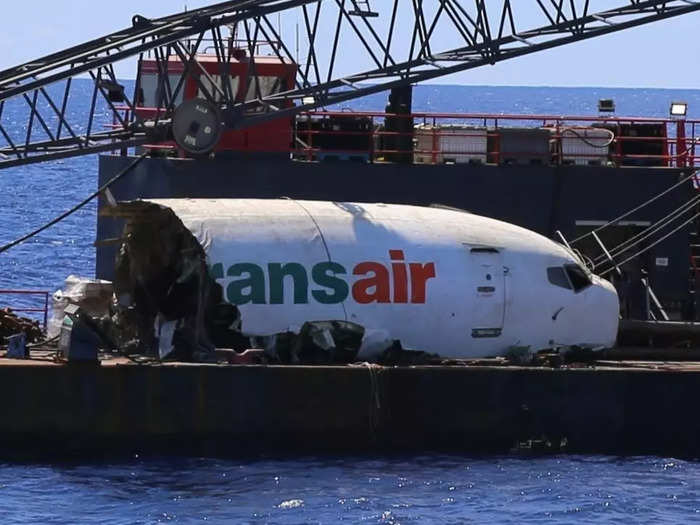
Forward fuselage
NTSB
Source: NTSB
The recovery effort began on October 12 when the Bold Horizon departed Honolulu for the crash site with two NTSB investigators, two Boeing engineers, and a team of recovery specialists in tow.
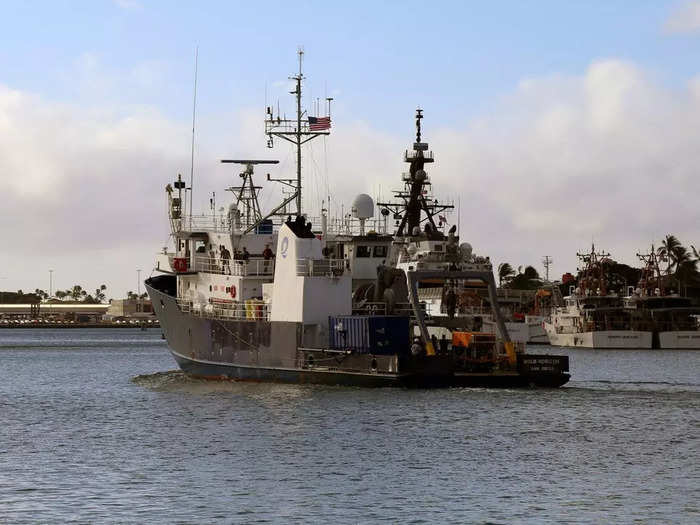
Bold Horizon as it departs Honolulu for the crash site
NTSB
Source: NTSB
The first task involved retrieving the separated pieces of the jet, including the two engines and forward landing gear. The team used cables and straps to rig the pieces and brought them to shore on October 17.
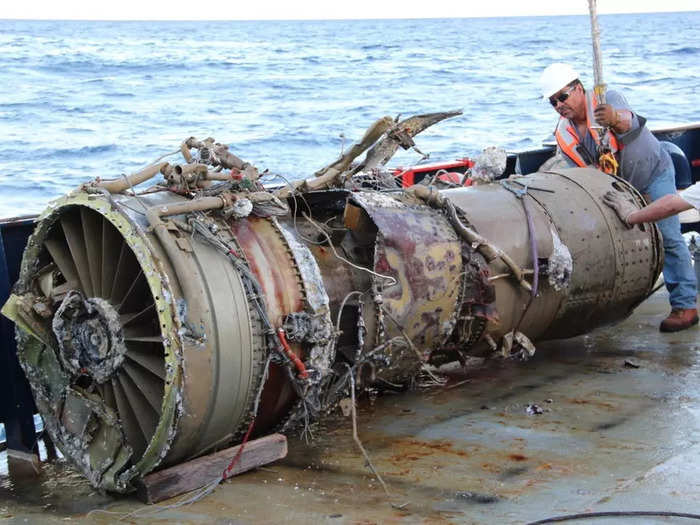
Engine on the Bold Horizon after recovery
NTSB
Source: NTSB
The vessel then set out for a second time to recover the two pieces of the fuselage. The 37-foot, 15,500-pound forward section was recovered first by the Blue Horizon's crane and was brought to shore on October 22.
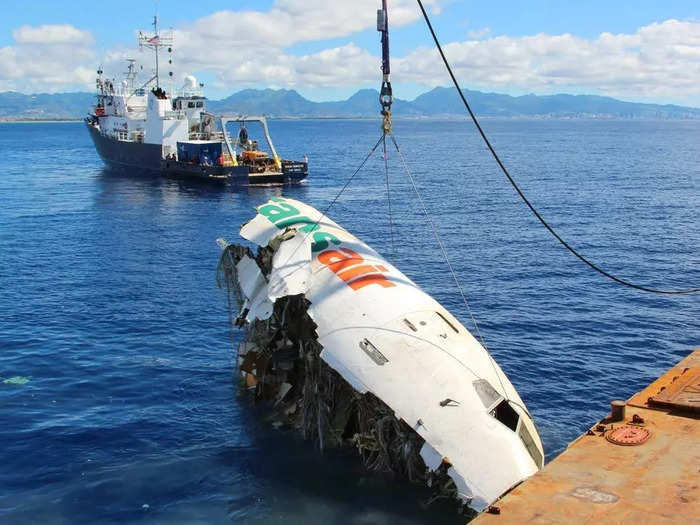
Forward fuselage being pulled up onto the Bold Horizon
NTSB
Source: NTSB
The aft section was recovered second, and the retrieval was much more challenging than the forward piece due to its size and weight, according to the NTSB. The aft section measures about 63 feet long and weighs around 48,500 pounds empty and around 60,500 pounds with the four cargo containers inside.
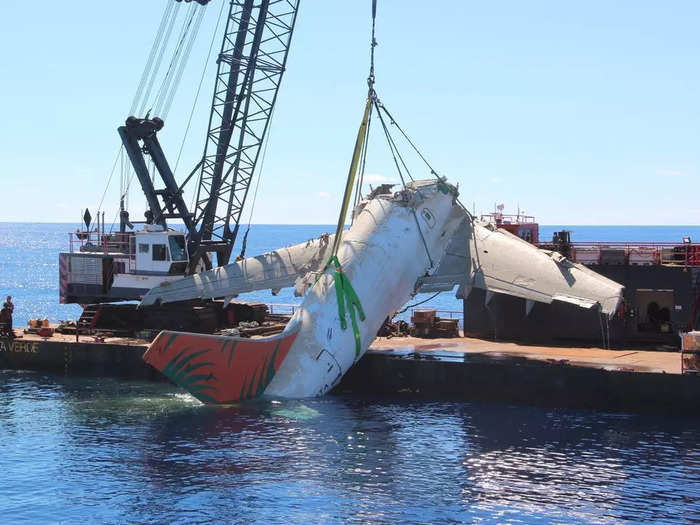
Aft fuselage recovery
NTSB
Source: NTSB
The team had to carefully rig the section so that the wings and tail would not fall off as it was lifted, which the crew successfully did on October 30. The team also recovered smaller pieces of the plane and cargo. The job took 20 days to complete from start to finish.
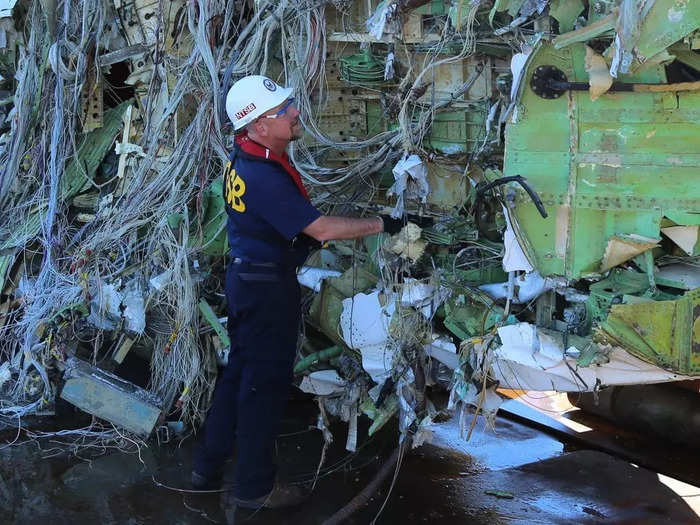
NTSB investigator inspects inside of forward fuselage
NTSB
Source: NTSB
The NTSB will document each piece of the fuselage, which will remain in Hawaii. Meanwhile, the flight data recorder and the cockpit voice recorder will be transported to the agency's lab in Washington DC where they will be "cleaned, dried, downloaded, and analyzed."

Forward fuselage on Bold Horizon
NTSB
Source: NTSB
The two engines will be placed on the Salta Verde barge and sailed back to the mainland where NTSB investigators will oversee the teardown and examination of both.
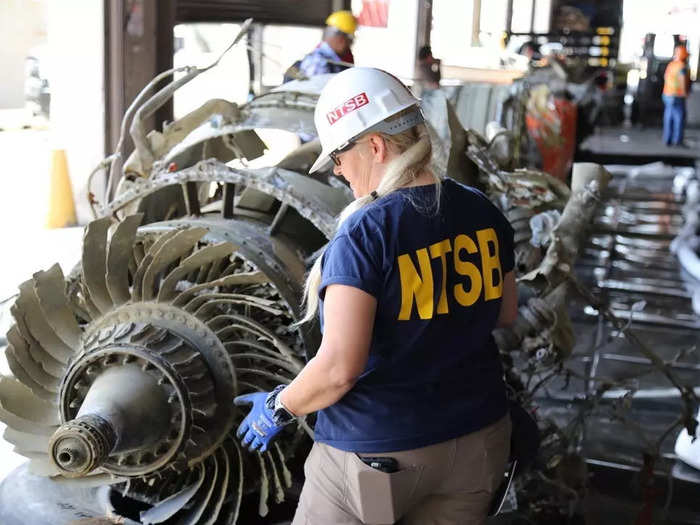
NTSB investigator inspecting right engine on shore
NTSB
Source: NTSB
According to the NTSB, the full investigation will take 12-24 months to complete and will include "a comprehensive examination of the airplane structure, engines, systems, maintenance, survival factors, vehicle performance, air traffic control, human factors, federal oversight, and emergency response."
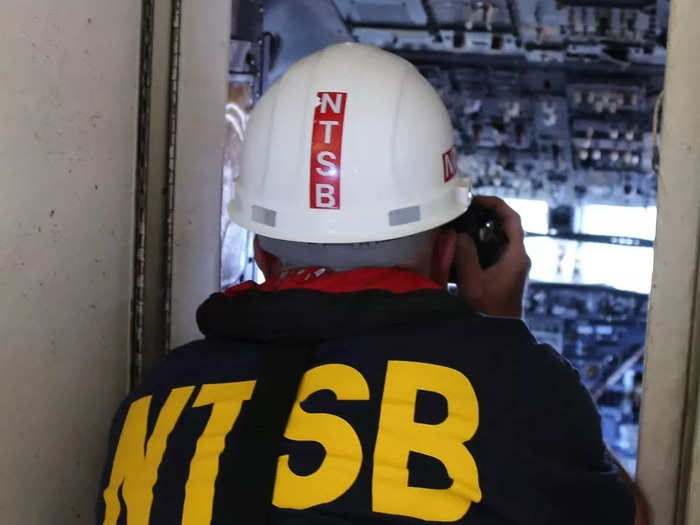
NTSB investigator photo documenting the cockpit
NTSB
Source: NTSB
Once the investigation is complete, the NTSB will release a report that will have the probable cause, any contributing factors, and any safety recommendations, according to Ward.
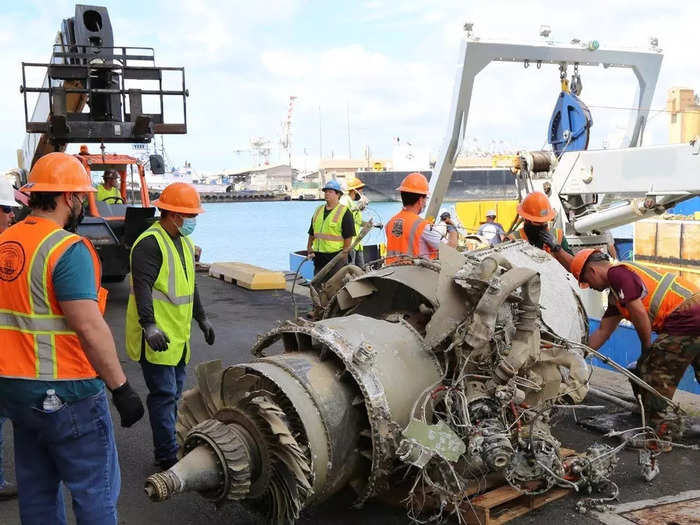
Right engine after being brought to shore
NTSB
Source: NTSB
READ MORE ARTICLES ON
Popular Right Now
Popular Keywords
Advertisement